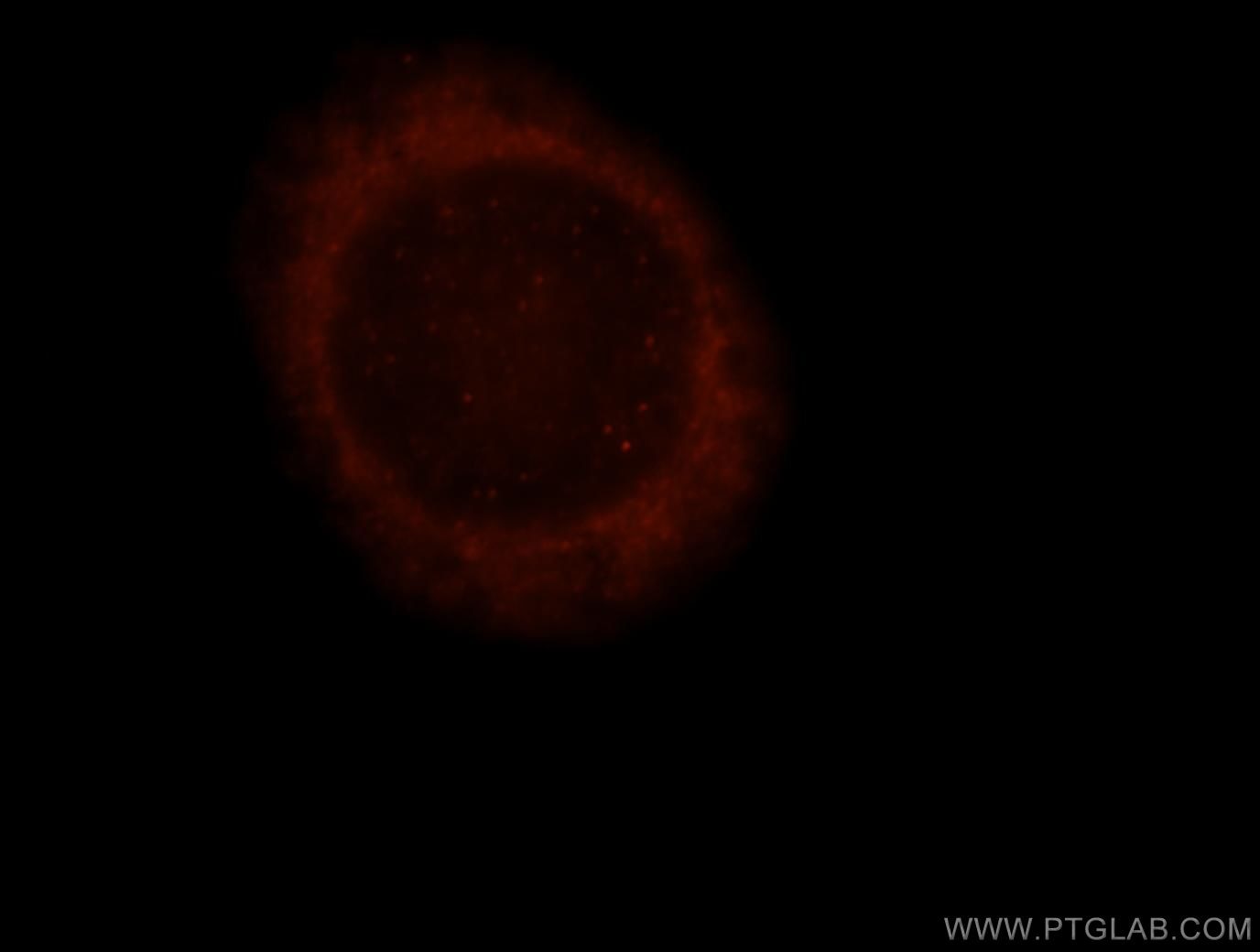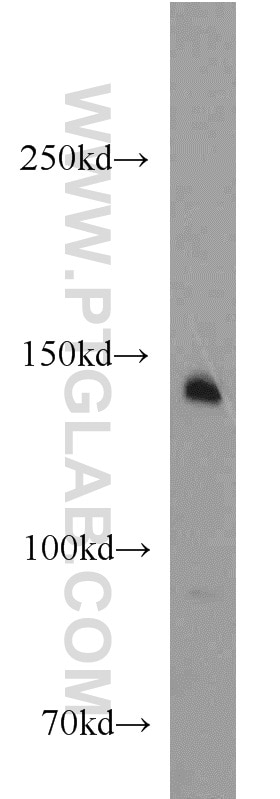- Phare
- Validé par KD/KO
Anticorps Polyclonal de lapin anti-HYAL2
HYAL2 Polyclonal Antibody for WB, IF, IHC, ELISA
Hôte / Isotype
Lapin / IgG
Réactivité testée
Humain, rat, souris
Applications
WB, IHC, IF/ICC, ELISA
Conjugaison
Non conjugué
N° de cat : 15115-1-AP
Synonymes
Galerie de données de validation
Applications testées
| Résultats positifs en WB | tissu cardiaque de souris, cellules HeLa, cellules Raji, tissu hépatique de souris |
| Résultats positifs en IHC | tissu de cancer du poumon humain, il est suggéré de démasquer l'antigène avec un tampon de TE buffer pH 9.0; (*) À défaut, 'le démasquage de l'antigène peut être 'effectué avec un tampon citrate pH 6,0. |
| Résultats positifs en IF/ICC | cellules HeLa |
Dilution recommandée
| Application | Dilution |
|---|---|
| Western Blot (WB) | WB : 1:500-1:2000 |
| Immunohistochimie (IHC) | IHC : 1:50-1:500 |
| Immunofluorescence (IF)/ICC | IF/ICC : 1:10-1:100 |
| It is recommended that this reagent should be titrated in each testing system to obtain optimal results. | |
| Sample-dependent, check data in validation data gallery | |
Applications publiées
| KD/KO | See 2 publications below |
| WB | See 4 publications below |
| IHC | See 1 publications below |
| IF | See 2 publications below |
Informations sur le produit
15115-1-AP cible HYAL2 dans les applications de WB, IHC, IF/ICC, ELISA et montre une réactivité avec des échantillons Humain, rat, souris
| Réactivité | Humain, rat, souris |
| Réactivité citée | Humain, souris |
| Hôte / Isotype | Lapin / IgG |
| Clonalité | Polyclonal |
| Type | Anticorps |
| Immunogène | HYAL2 Protéine recombinante Ag7157 |
| Nom complet | hyaluronoglucosaminidase 2 |
| Masse moléculaire calculée | 54 kDa |
| Poids moléculaire observé | 54-60 kDa |
| Numéro d’acquisition GenBank | BC000692 |
| Symbole du gène | HYAL2 |
| Identification du gène (NCBI) | 8692 |
| Conjugaison | Non conjugué |
| Forme | Liquide |
| Méthode de purification | Purification par affinité contre l'antigène |
| Tampon de stockage | PBS avec azoture de sodium à 0,02 % et glycérol à 50 % pH 7,3 |
| Conditions de stockage | Stocker à -20°C. Stable pendant un an après l'expédition. L'aliquotage n'est pas nécessaire pour le stockage à -20oC Les 20ul contiennent 0,1% de BSA. |
Informations générales
Hyaluronic acid (HA) is a glycosaminoglycan that is believed to have numerous important biologic functions, including modulation of cell proliferation, migration, and differentiation, as well as the regulation of extracellular water and protein homeostasis. It is also an integral structural component of cartilage and other tissues and acts as a lubricant in joints. Hyaluronidases are a family of enzymes that catalyse the degradation of HA. In humans, there are five functional hyaluronidases: HYAL1, HYAL2, HYAL3, HYAL4 and HYAL5 (also known as SPAM1 or PH-20); plus a pseudogene, HYAL6 (also known as HYALP1). HYAL2 is present in many tissues except the adult brain (PMID: 11731268). HYAL2 can be exposed to cell surfaces that bind to the plasma membrane via GPI anchors (PMID: 11731268).
Protocole
| Product Specific Protocols | |
|---|---|
| WB protocol for HYAL2 antibody 15115-1-AP | Download protocol |
| IHC protocol for HYAL2 antibody 15115-1-AP | Download protocol |
| IF protocol for HYAL2 antibody 15115-1-AP | Download protocol |
| Standard Protocols | |
|---|---|
| Click here to view our Standard Protocols |
Publications
| Species | Application | Title |
|---|---|---|
Genet Med Elucidating the clinical spectrum and molecular basis of HYAL2 deficiency.
| ||
Front Immunol Complement protein C1q stimulates hyaluronic acid degradation via gC1qR/HABP1/p32 in malignant pleural mesothelioma | ||
Dermatol Ther Role of Momordica charantia in preventing the natural aging process of skin and sexual organs in mice. |












